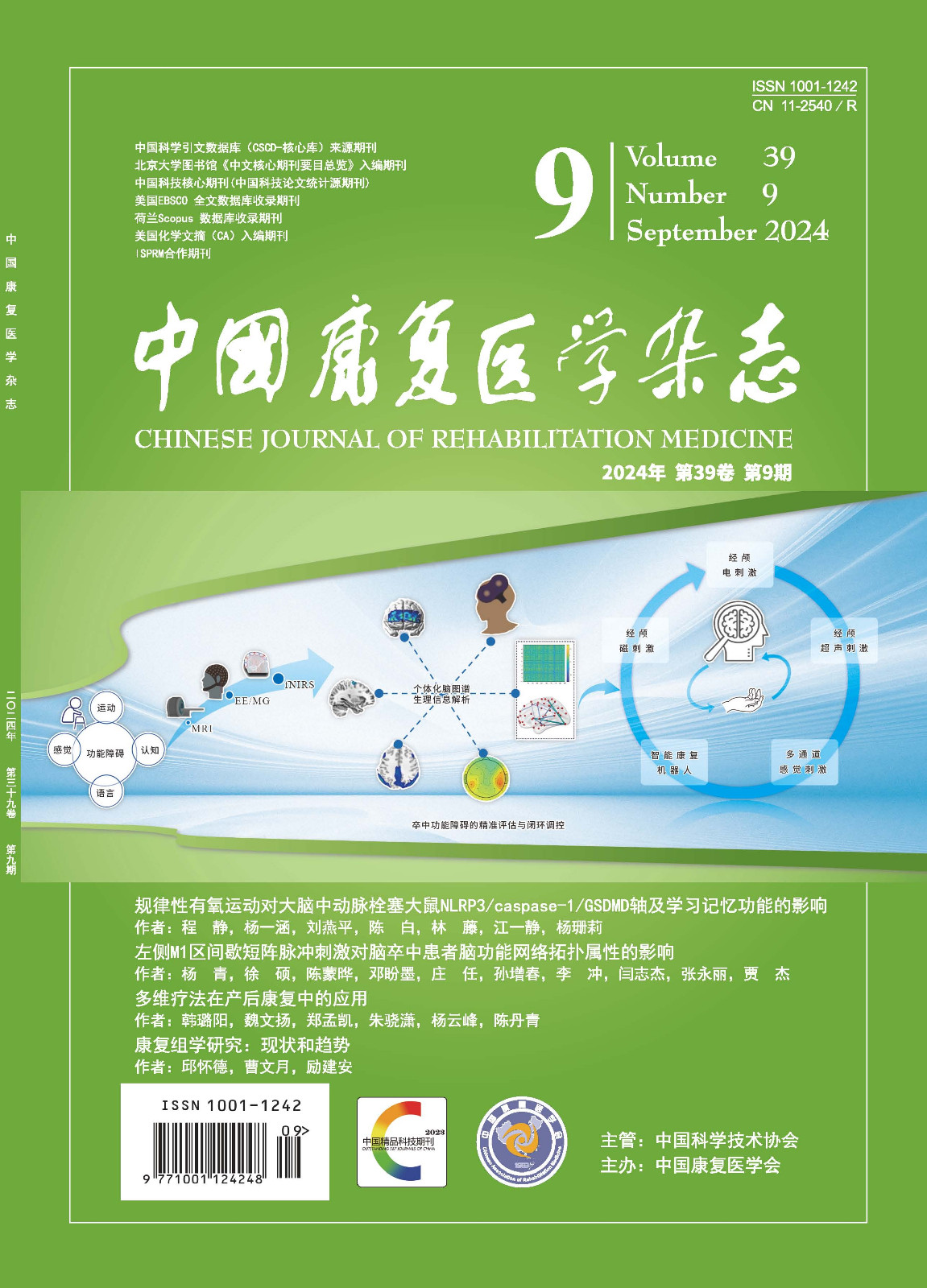单侧肌电刺激训练对力量和表面肌电信号的影响
Q4 Medicine
引用次数: 0
摘要
目的:应用肌表电图技术探讨单侧肌电刺激(EMS)训练对大鼠肌肉力量和表面肌电信号的影响。方法:将30名年龄在18-30岁的健康男性志愿者随机分为EMS组、自愿等距收缩组(VIM)和对照组(CON),每组10人。EMS组和VIM组患者进行右腿训练,每周3次,连续6周。各组均在训练前后进行肌力和肌电图检测。结果:经Bonferroni调整的重复测量方差分析显示,EMS组(右腿33.6%,左腿27.8%)和VIM组(37.4%,28.5%)两腿背屈最大自主收缩(MVC)均显著升高(P0.05), CON组无显著升高(分别为1.3%,0.8%)。EMS组四肢肌电图平均振幅(AEMG)明显改善(P0.05;右侧68.1%,左侧57.7%),VIM组(100.4%,59.4%),CON组(5.04%,-4.07%),差异有统计学意义(p < 0.05)。等距收缩时肌力与表面肌电信号振幅呈非线性关系,y=43.762(9.584) t。结论:单侧EMS和自主等长肌力训练不仅能显著提高运动腿的肌力,还能显著提高对侧肢体的肌力。结果还表明,AEMG的增加是强度提高的主要原因。肌肉力量与肌电信号振幅呈非线性关系,可用于临床康复的用力测试评估。本文章由计算机程序翻译,如有差异,请以英文原文为准。
Bilateral effects of unilateral electromyostimulation training on strength and surface myoelectric signal
Objective: To investigate the bilateral effects of unilateral electromyostimulation(EMS)training on muscle strength and surface myoelectric signal by surface electro myogram(sEMG)technique. Method: Thirty healthy male volunteers, aged 18—30 years, were randomly assigned into three groups (n=10 each): EMS group, voluntary isometric contraction (VIM) group, and control (CON) group. The patients of EMS and VIM groups were trained the right legs, 3 sessions per week for 6 weeks. All groups were tested for muscle strength and sEMG pre-and post-training period. Result: Repeated measures ANOVA with Bonferroni adjustment revealed significant increase (P0.05) in dorsiflexion maximal voluntary contraction(MVC) of both legs in both EMS group(33.6% on the right leg, 27.8% on the left) and VIM group(37.4%, 28.5%), while CON group showed no significant increase (1.3%, 0.8%, respectively). The average amplitude of electromyogram(AEMG) improved significantly in both limbs of EMS group (P0.05; right 68.1%, left 57.7%) and in VIM group(100.4%, 59.4%), CON group(5.04%, -4.07%) (P0.05), respectively.There was non-linear relationship between muscle strength and amplitude of surface myoelectric signal during iso-metric contraction, y=43.762(9.584) t . Conclusion:The results indicated that unilateral EMS and voluntary isometric training could significantly improve muscular strength not only in the exercised legs,but also in the contralateral limbs. The results also indicated that the increased AEMG was responsible for much of the improved strength.A non-linear relationship between muscle strength and sEMG amplitude, could probably use to assess subjects' exertion test for clinical rehabilitation.
求助全文
通过发布文献求助,成功后即可免费获取论文全文。
去求助
来源期刊

中国康复医学杂志
Medicine-Rehabilitation
CiteScore
0.30
自引率
0.00%
发文量
9621
期刊介绍:
Chinese Journal of Rehabilitation Medicine is a national professional core journal sponsored by the Chinese Society of Rehabilitation Medicine. It is openly circulated at home and abroad. The contents are mainly related to the rehabilitation treatment of motor system and related advanced nerve center dysfunction, cardiorespiratory dysfunction and so on. It has been successively included in China Science and Technology Journal Management Database and China Biomedical Literature CD-ROM Database. In January 1996, it became one of the first selected journals of China Academic Journals (CD-ROM Edition) co-sponsored by Beijing Tsinghua Information System Engineering Company, the National Engineering Center of CD-ROM Edition, and in 1998, it was selected as an online scientific and technological journal by China Institute of Scientific and Technological Information and can be accessed instantly on the international Internet. The full text can be accessed instantly on the Internet.
 求助内容:
求助内容: 应助结果提醒方式:
应助结果提醒方式:


